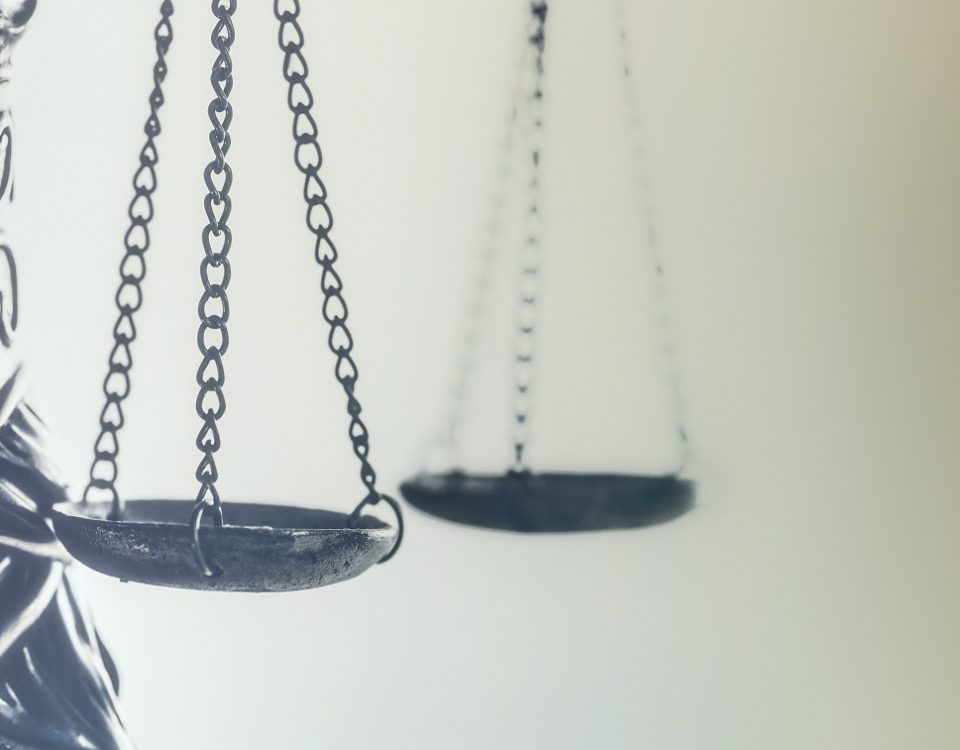Historical Roots of Gender Employment Discrimination

The Evolution of LGBTQ Employment Rights: A Global Perspective
August 11, 2023
Racial and Ethnic Discrimination in the Workplace
August 23, 2023Introduction
In the labyrinth of professional arenas, the specter of gender discrimination has long cast a shadow, subtly influencing decisions, opportunities, and the very trajectory of countless careers. At its core, gender discrimination in the workplace is an unjust treatment or bias based on an individual’s gender or gender identity. While we’ve made substantial progress over the decades, understanding the roots of this deeply ingrained issue is pivotal to its eradication.
Historically, societal and cultural norms delineated distinct roles for men and women, with the latter often relegated to subservient or limited roles. This imbalance naturally permeated into workplaces, with women facing hurdles not just in securing employment, but also in receiving equitable pay and opportunities. Despite the legal fortifications, such as Title VII of the Civil Rights Act of 1964 and the Law Against Discrimination, the battle against discrimination of women employees continues even in the modern era.
This article delves into the historical tapestry of gender employment discrimination, tracing its origins, the seismic shifts towards equal rights, and the pressing challenges we face today. Through a deep dive into legal frameworks, real-life case studies, and the lessons gleaned from the past, we aim to shed light on the path forward towards a more inclusive and equitable professional world.
The Shift Towards Equal Rights: Major Milestones
The tides of change were fueled by several factors – the tireless efforts of women’s rights activists, landmark legal battles, and an evolving societal consciousness.
- Introduction of Title VII of the Civil Rights Act of 1964: This pivotal legislation prohibited employers from discriminating against employees based on sex, race, color, national origin, and religion. Specific to our focus, Title VII was monumental in its stand against gender discrimination, marking a turning point in the legal fight for equality in workplaces.
- The Feminist Movement and Landmark Cases: The feminist movement, particularly during the 1960s and 1970s, became the torchbearer in pushing for equal rights. Protests, publications, and advocacy drew attention to systemic biases. Parallelly, courts witnessed landmark cases that further solidified women’s rights in the workplace. One such case was Phillips v. Martin Marietta Corp. (1971), where the U.S. Supreme Court ruled against a company that denied jobs to women with young children, while hiring men with children of the same age.
Gender Discrimination in the Modern Era
While past strides have paved the way for a more equitable workplace, the journey is far from over. Contemporary challenges remain, often manifesting in subtle yet insidious ways.
- Persistence of Discrimination Against Women Employees: Today’s employment landscape, while vastly improved, still holds pockets of discrimination. Women, especially those of color, continue to face biases in hiring, promotions, and remuneration. Industries, particularly those in tech, finance, and certain STEM fields, still reflect a significant gender disparity.
- The Gender Pay Gap: Despite increased awareness and advocacy, the pay gap persists. According to resources like the National Women’s Law Center, women in the U.S. typically earn only 82 cents for every dollar earned by men. Factors contributing to this disparity include occupational segregation, biased performance reviews, and societal expectations.
In this section, we’ve journeyed through the early origins of gender employment discrimination, touched upon the monumental legal changes, and transitioned into modern-day challenges. The narrative helps to establish the foundation for the subsequent sections, emphasizing the complexities and evolution of the issue.

Legal Safeguards: Addressing Gender Employment Discrimination
Legal measures have been a vital instrument in the fight against gender discrimination. With each legislation or judgment, society took a step closer to creating equitable workplaces.
- The Law Against Discrimination: This legislation, which varies from state to state, encompasses provisions that prohibit unfair treatment based on gender in various domains, including employment. These laws aim to ensure fair hiring practices, equal pay, and protection against workplace harassment.
- The Equal Pay Act of 1963: Preceding the Civil Rights Act, this legislation was one of the first to address the gender wage gap directly. It mandates that men and women in the same workplace be given equal pay for equal work.
- Other Noteworthy Legislation and Cases: Various other statutes and court decisions over the years have reinforced the stand against gender discrimination. Cases like Meritor Savings Bank v. Vinson addressed sexual harassment in the workplace, emphasizing that a hostile environment, even if not linked to tangible employment actions, still constitutes a violation of Title VII.
The Role and Responsibility of Employers
To foster an inclusive work environment, employers bear a significant responsibility. Their actions, or lack thereof, can either fortify or weaken the stand against gender employment discrimination.
- Proactive Measures: Leading businesses have initiated gender sensitivity training, unbiased recruitment processes, and mentorship programs specifically tailored for women. Such endeavors not only address discrimination but also promote a culture of inclusivity.
- Handling Complaints: Employers must establish a transparent and efficient mechanism to address grievances related to gender discrimination. Ensuring confidentiality and a retaliation-free process is paramount.
- Promoting Awareness: Using platforms like the employmentlit.com helps employers stay updated on the legal landscape, understand intricacies, and adapt best practices in their organizations.
Moving Forward: Challenges and Hope
The fight against gender discrimination in employment, while robust, is an ongoing journey. Current challenges range from the underrepresentation of women in certain sectors to dealing with unconscious biases.
- Challenges in Enforcement: Laws, while stringent on paper, often face hurdles in their practical application. Factors like fear of retaliation, lack of awareness among employees about their rights, and legal loopholes can hamper the effective enforcement of anti-discrimination laws.
- The Role of Allies: Men, as allies, play a crucial role in this fight. Their support, be it in calling out biases, mentoring, or championing gender-equitable policies, can significantly accelerate the movement towards equality.
- Future Landscape: With the increasing global emphasis on diversity and inclusion, and the younger generation’s active advocacy for rights, the horizon looks promising. The blend of legal measures, societal awareness, and corporate responsibility can potentially shape a future where gender employment discrimination is a relic of the past.
This segment continues our exploration, detailing the legal fortifications against gender discrimination, the proactive role of employers, and a contemplative look towards the future.
Resources for Gender Discrimination Victims
Awareness is a potent tool. For individuals who believe they’ve been subjected to gender discrimination in their workplaces, a wealth of resources exists to guide, support, and advocate on their behalf.
- Official Legal Platforms: Government bodies, such as the U.S. Equal Employment Opportunity Commission (EEOC), are primary resources. They not only offer guidelines on what constitutes gender discrimination under Title VII but also provide mechanisms for lodging official complaints.
- Legal Associations and Advocacy Groups: Several associations, like the American Bar Association, maintain directories of attorneys who specialize in employment law. There are also numerous non-profits, like the ACLU, that are dedicated to addressing and combating gender discrimination.
- Online Portals: Websites such as employmentlit.com serve as informative hubs. They provide insights into the nuances of gender discrimination, landmark cases, and advice for victims.
The Path Ahead: A Collective Responsibility
Gender discrimination is not just an issue for its victims or employers; it’s a societal concern. The repercussions of such discrimination echo in economic disparities, underutilization of talent, and the perpetuation of biases.
- Community Engagement: Grassroot movements, community discussions, and workshops can enlighten individuals about the manifestations and consequences of gender biases. They also empower communities to recognize and counteract discrimination.
- Corporate Accountability: Beyond compliance with legal mandates, businesses must adopt a proactive approach. This includes transparent reporting on gender metrics, pay scales, and ongoing training sessions that foster an inclusive culture.
- Educational Initiatives: School and university curricula can play a transformative role by integrating gender studies, discussing historical and contemporary challenges, and promoting values of equality.
Conclusion
The scourge of gender discrimination, while age-old, is facing mounting challenges from legal mechanisms, corporate accountability, and societal shifts. As the contours of the problem evolve, so does the collective response. Websites like employmentlit.com and many others continue to shed light on this pressing issue, providing a roadmap for both understanding and action. As we tread this path, it’s evident that the journey towards gender equality in employment is a collective endeavor, necessitating the involvement of every stakeholder.
The dawn of an era where employment opportunities and experiences aren’t tainted by gender biases may seem distant, but with sustained effort, it is undeniably within reach.
This concluding section ties together the various strands explored throughout the article, reflecting on the past, assessing the present, and looking forward with optimism and determination.
Authoritative Resources:
- The U.S. Equal Employment Opportunity Commission (EEOC) – For Title VII and its interpretations.
- National Women’s Law Center (NWLC) – For statistics, facts, and more detailed insights.
- Employment Lit: Gender Discrimination – For case studies and specific references to gender discrimination.
- International Labour Organization (ILO) – For a global perspective on gender employment discrimination.


